Wassily Kandinsky

Summary
Wassily Kandinsky (1866-1944) was a Russian painter and art theorist, celebrated as a pioneer of abstract art. He believed that color and form could communicate universal spiritual truths, independent of representation from the natural world. Kandinsky’s career evolved through three distinct phases: from early symbolic works to expressive, free-flowing compositions, and finally to a more structured geometric and biomorphic abstraction. A central figure in the German Expressionist movement, he co-founded the influential artist group Der Blaue Reiter (The Blue Rider) and was a key instructor at the Bauhaus school of art and design. His groundbreaking theoretical writings, including Concerning the Spiritual in Art, laid the philosophical foundation for non-objective art. Forced to move multiple times due to war and political upheaval, Kandinsky’s innovative style profoundly influenced subsequent generations of artists, most notably the Abstract Expressionists.
Childhood and Early Training
Born in Moscow to an upper-class family of diverse heritage, Wassily Kandinsky spent most of his youth in the multicultural city of Odesa. From an early age, he showed a unique sensitivity to color and sound. Although he took drawing and music lessons, he initially pursued an academic career, studying law, economics, and ethnography at the University of Moscow. A trip to northern Russia in 1889 exposed him to the vibrant colors of traditional folk art, an experience that deeply influenced his later work. Despite a successful start as a university lecturer, Kandinsky abandoned his legal career at the age of 30 and moved to Munich in 1896 to study painting. There, he trained under artists like Anton Azbe and Franz von Stuck, co-founded the progressive artist group “Phalanx,” and began a long-term relationship with his student, the painter Gabriele Münter.
The Blue Rider and the Path to Abstraction
After several years of traveling through Europe and North Africa with Münter, Kandinsky settled back in Munich, where he helped establish the New Artists Association of Munich in 1909. Disagreements within this group led him and fellow artist Franz Marc to form their own collective in 1911: Der Blaue Reiter (The Blue Rider). United by a belief in the spiritual power of art, the group included prominent Expressionists who explored the connection between color, sound, and emotion. During this time, Kandinsky published his seminal text, Concerning the Spiritual in Art (1911), arguing that artists could communicate profound truths through a non-representational visual language. He increasingly moved toward pure abstraction, creating dynamic, layered works like Composition VII (1913) that aimed to express his inner spiritual life.
Russia and the Bauhaus
The outbreak of World War I forced Kandinsky, a Russian citizen, to leave Germany. He returned to Moscow in 1916, where he married Nina Andreevskaya and engaged with the Russian avant-garde, including Constructivists and Suprematists. Though initially supportive of the 1917 October Revolution, he grew disillusioned as the Soviet regime promoted a utilitarian, functionalist view of art that clashed with his mystical and spiritual approach. In 1921, he accepted an invitation from Walter Gropius to teach at the Bauhaus, a groundbreaking art and design school in Germany. During his tenure there, Kandinsky’s style shifted towards a more geometric abstraction, emphasizing circles, triangles, and lines. He articulated these new ideas in his second major theoretical book, Point and Line to Plane (1926), which advocated for a more scientific and analytical approach to painting.
Final Years in France and Legacy
In 1933, the Nazis shut down the Bauhaus, labeling its art “degenerate.” Kandinsky was once again forced to relocate, settling in a suburb of Paris with his wife. In this final phase of his career, his style evolved again, moving away from rigid geometry towards fluid, organic shapes often described as “biomorphic,” showing an affinity with the work of Surrealists like Joan Miró. While largely overlooked by the Parisian art world, he gained a crucial supporter in the American collector Solomon R. Guggenheim, whose acquisitions would make Kandinsky a cornerstone of his future museum in New York. The Nazi regime confiscated 57 of his works, but his reputation continued to grow abroad. Kandinsky died in France in 1944, just before the end of World War II. Though he spent his last years in relative quiet, his pioneering work in abstraction cemented his legacy as one of the most important and influential artists of the 20th century.
Mostrando todos los 7 resultados
-
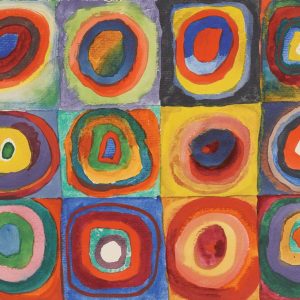
Color Study, Squares with Concentric Rings
$180.00 – $311.00Price range: $180.00 through $311.00 Seleccionar opciones Este producto tiene múltiples variantes. Las opciones se pueden elegir en la página de producto -
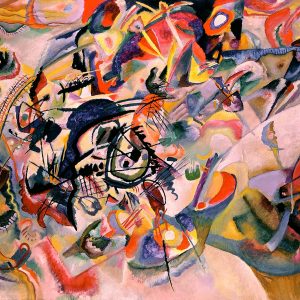
Composition VII
$396.00 – $2,424.00Price range: $396.00 through $2,424.00 Seleccionar opciones Este producto tiene múltiples variantes. Las opciones se pueden elegir en la página de producto -
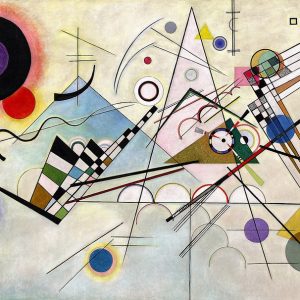
Composition VIII
$236.00 – $1,120.00Price range: $236.00 through $1,120.00 Seleccionar opciones Este producto tiene múltiples variantes. Las opciones se pueden elegir en la página de producto -
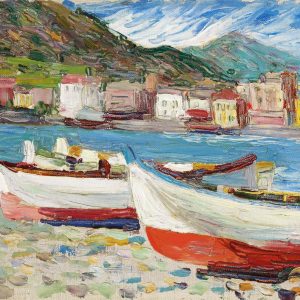
Rapallo, Boats
$180.00 – $311.00Price range: $180.00 through $311.00 Seleccionar opciones Este producto tiene múltiples variantes. Las opciones se pueden elegir en la página de producto -
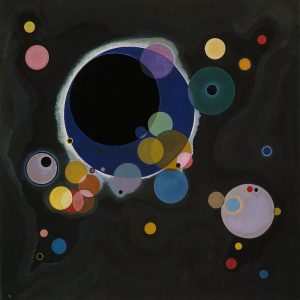
Several Circles
$236.00 – $788.00Price range: $236.00 through $788.00 Seleccionar opciones Este producto tiene múltiples variantes. Las opciones se pueden elegir en la página de producto -
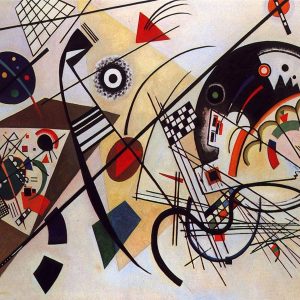
Throughgoing Line
$316.00 – $1,120.00Price range: $316.00 through $1,120.00 Seleccionar opciones Este producto tiene múltiples variantes. Las opciones se pueden elegir en la página de producto -
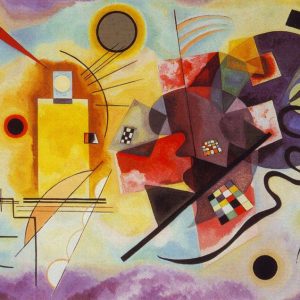
Yellow-Red-Blue
$196.00 – $728.00Price range: $196.00 through $728.00 Seleccionar opciones Este producto tiene múltiples variantes. Las opciones se pueden elegir en la página de producto
